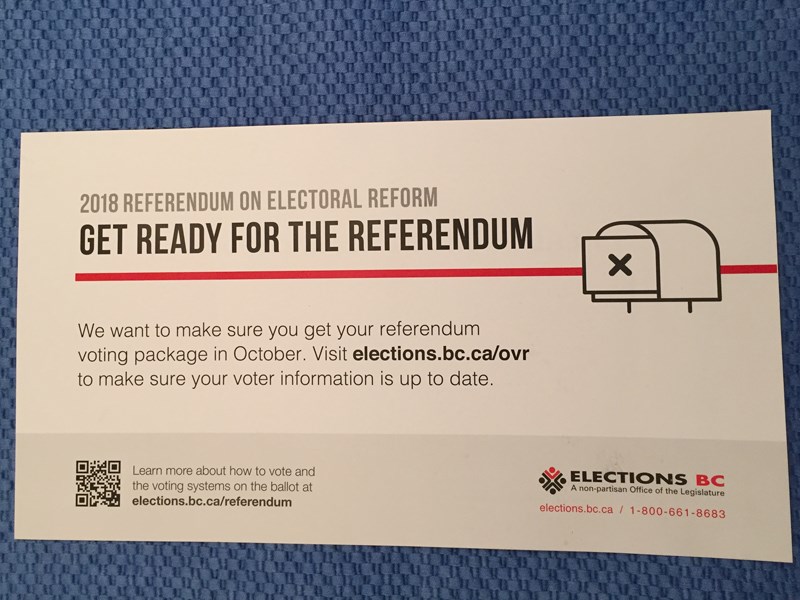Between October 22 and November 20, British Columbians will decide through a mailed ballot whether the province should keep its current first-past-the-post voting system, or switch to one of three proportional representation voting systems: Dual Member Proportional, Mixed Member Proportional and Rural-Urban Proportional.
This series of three articles examines how these systems work, and the pros and cons of each. Last week's article focused on the dual-member system. This week’s looks at the mixed-member option.
Under a mixed-member system, there would be two types of MLA: district and regional. Voters would elect district MLAs in exactly the same way they currently vote for MLAs: the candidate who wins the most votes wins the district. Regional MLAs would represent groups of districts called “regions.”
Regional MLAs would be elected from a party list so that each party’s share of seats in the legislature roughly matches its share of the province-wide vote, however, a party would need to receive at least five per cent of the overall vote to have any regional seats in the legislature.
In some forms of mixed-member, voters have two votes: one for their district representative and one for their preferred political party. In other forms, voters have only one vote, and their vote for a particular candidate also counts as a vote for that candidate’s party.
According to Elections BC, if the province adopts the mixed-member system, a committee will determine whether voters will get one or two votes.
Unlike the dual-member system, which is not currently used anywhere in the world, several countries use mixed-member at both national and subnational levels. Germany, New Zealand, and Scotland all use mixed-member proportional systems.
Germany has a two-vote system, in which electors vote for a local representative and their preferred political party. A voter’s preferred local representative might belong to his or her preferred political party, in which case the voter would first cast a vote for the candidate, and then vote separately for the candidate’s party. Half of the seats in the German national legislature are elected directly from local districts. The other half represents seats for parties that win more than five per cent of the popular vote.
Proponents say the two-vote system allows voters to keep their local representative while also enabling them to cast a vote for their preferred party. A voter might like their local representative, but prefer to see a different party in power.
Proponents also say that a mixed-member system would encourage higher voter turnout. Political scientist Arend Lijphart found that countries using systems like mixed-member proportional have an average 7.5 per cent higher turnout than countries using first-past-the-post.
However, opponents say both the one-vote and two-vote versions of the mixed-member system would lead to a higher number of political parties gaining representation in the legislature. Opponents argue that this would lead to unstable multi-party coalitions and back room deals.
Opponents also note that Germany’s mixed-member system recently gave seven parties seats in the German federal parliament, including the far-right Alternative for Germany Party and the Left Party.
Next week: Rural-Urban Proportional.



